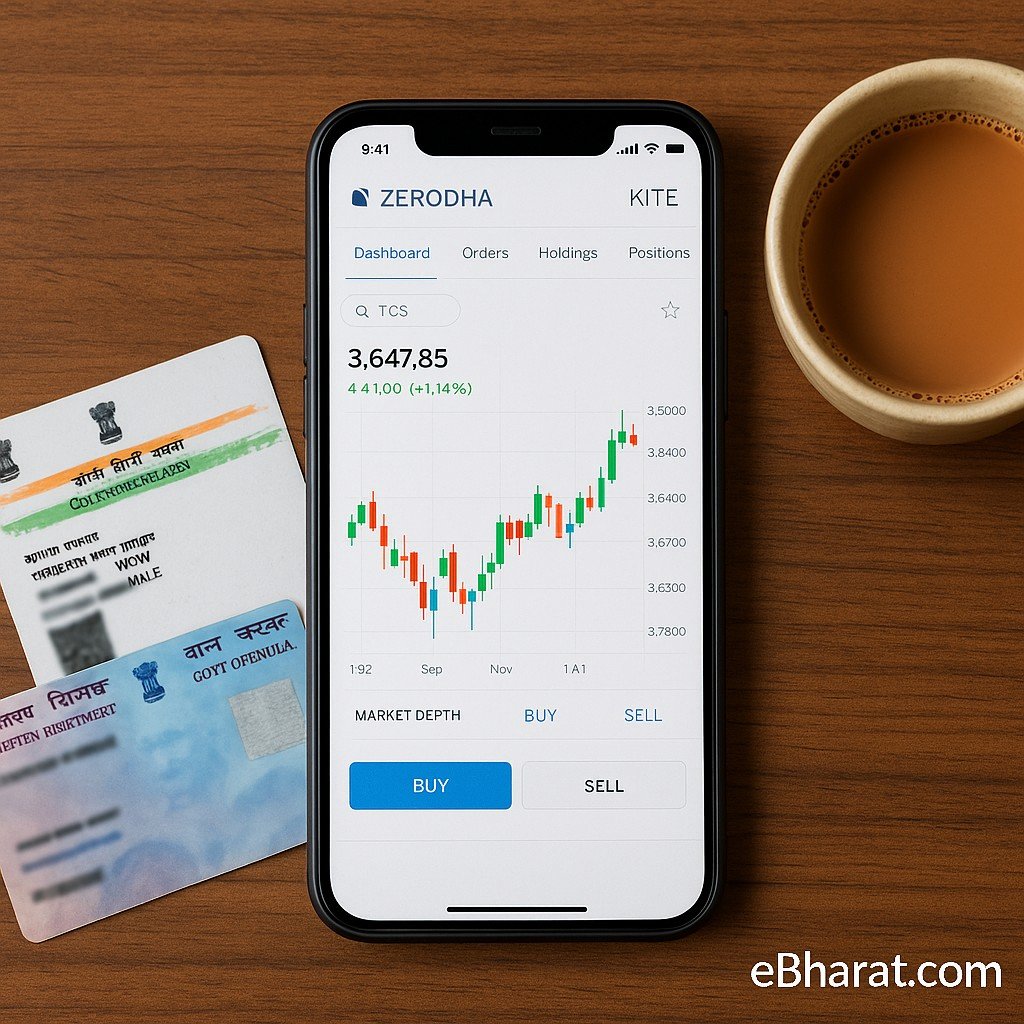
Zerodha has dominated India’s brokerage industry for over a decade. With its Kite platform, it revolutionized trading by making it low-cost, transparent, and technology-first. In 2025, Zerodha continues to hold its position as the most trusted discount broker, with more than 1.5 crore clients actively using Kite for stocks, F&O, commodities, and mutual funds.
But is Zerodha still the best option for you this year? Let’s break down pricing, features, pros, and cons of Zerodha’s flagship Kite platform to help you decide.
Account Opening with Zerodha (2025 Update)
Opening a Zerodha account in 2025 has become faster and more seamless, thanks to DigiLocker and Aadhaar-linked eKYC.
- Eligibility: Aadhaar + PAN + Bank account + Mobile linked with Aadhaar.
- Charges: ₹200 (equity & F&O), ₹100 (commodities).
- Time Taken: Same-day approval in most cases.
- Payment Mode: UPI, NetBanking.
Zerodha Pricing & Brokerage Structure
Zerodha is known for its lowest flat brokerage model in India.
| Segment | Brokerage Charges |
|---|---|
| Equity Delivery | ₹0 (Free) |
| Equity Intraday | ₹20 or 0.03% per order (whichever lower) |
| F&O (Equity, Currency, Commodity) | ₹20 per executed order |
| Account AMC | ₹300 per year |
This transparent pricing model is what made Zerodha so popular among both retail and professional traders.
Kite Platform Features
Kite is Zerodha’s flagship trading app, available on both web and mobile. It’s designed for speed, simplicity, and professional-grade charting.
- User Interface: Clean, fast, and minimal design.
- Charts: Integrated with TradingView & ChartIQ for advanced analysis.
- Order Types: CNC, MIS, BO, CO, GTT (Good Till Triggered).
- Market Depth: Live 20-level market depth for NSE.
- Mobile vs Desktop: Fully synced experience with dark mode support.
Kite also allows instant fund transfers via UPI, giving traders a seamless experience.
Research, Tools & Reports
While Zerodha doesn’t provide stock tips, it makes up for it with a robust ecosystem:
- Console: Portfolio dashboard, P&L, tax reports.
- Varsity: Free education platform with modules on stocks, F&O, technical analysis, and personal finance.
- Coin: Direct mutual fund platform with zero commission.
- Smallcase (Partnered): Thematic investment baskets integrated with Zerodha.
This makes Zerodha not just a broker but a complete investor toolkit.
Pros & Cons of Zerodha (2025)
Quick snapshot for readers comparing pricing, tech, and support.
Pros of Zerodha
- Lowest Brokerage: ₹20 per order, ₹0 on delivery.
- Trust & Scale: India’s largest broker with 1.5+ crore clients.
- Best Tech: Kite + Console + Varsity ecosystem.
- Transparency: Clear pricing, no hidden charges.
- Education: Free learning resources (Varsity).
Cons of Zerodha
- No Advisory: Doesn’t give buy/sell recommendations.
- Customer Support: Response time can be slow during peak hours.
- Beginner Overload: Advanced features may confuse absolute beginners.
Who Should Use Zerodha in 2025?
Zerodha is best for:
- DIY Traders: Who want full control at the lowest cost.
- Long-term Investors: Free delivery trades make it ideal.
- Learners: Varsity and reports are great for self-study.
Not suitable for:
- Investors who rely heavily on broker recommendations.
- Traders needing RM support or phone-based advisory.
In 2025, Zerodha (Kite) remains India’s most trusted and affordable broker. Its clean interface, robust tools, and zero-delivery brokerage keep it ahead of competitors. While lack of advisory and occasional support delays may be drawbacks, the benefits easily outweigh them.












